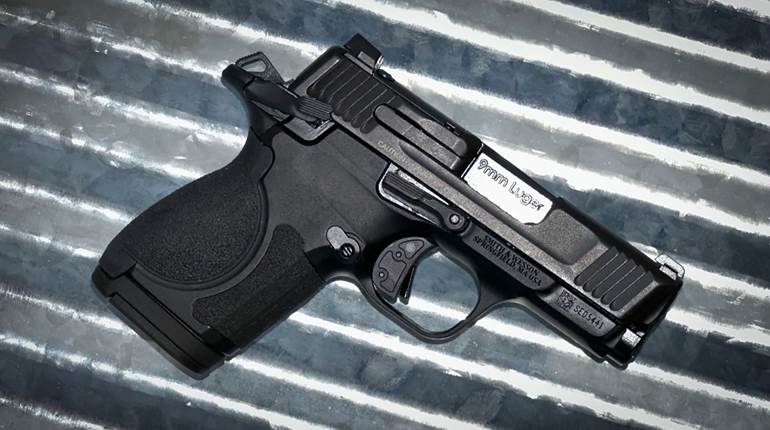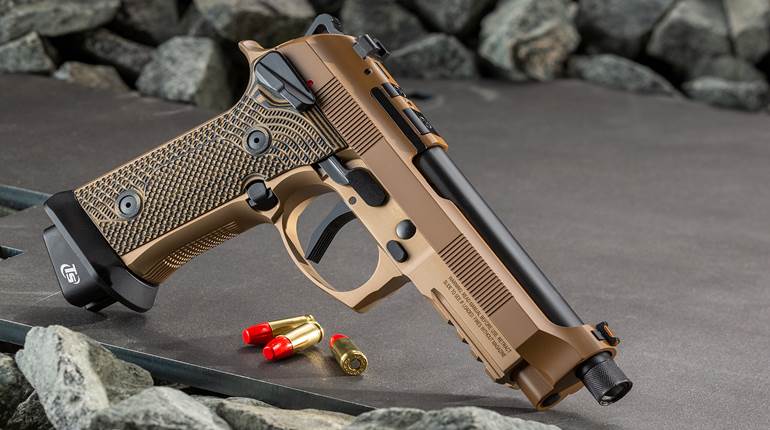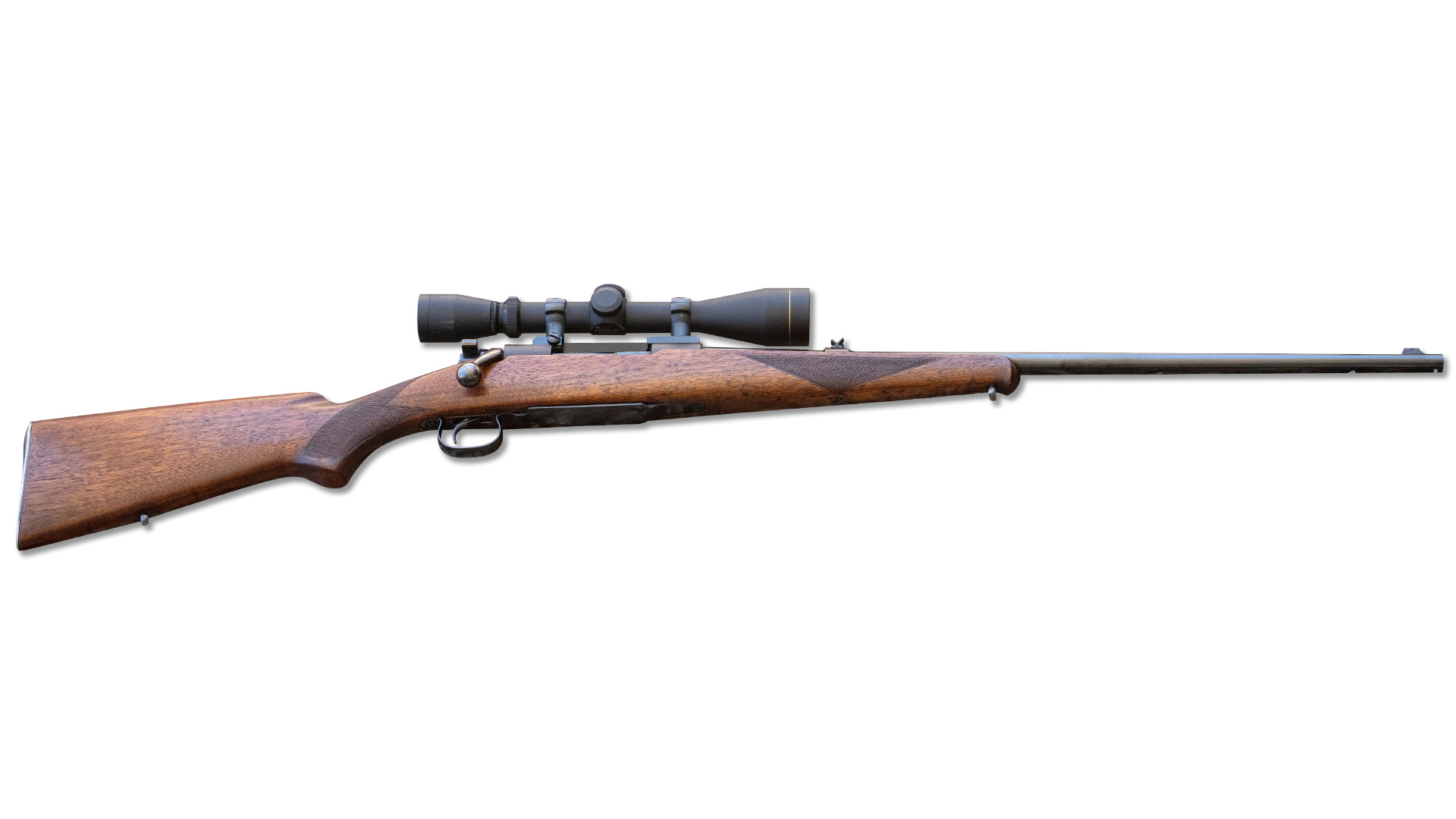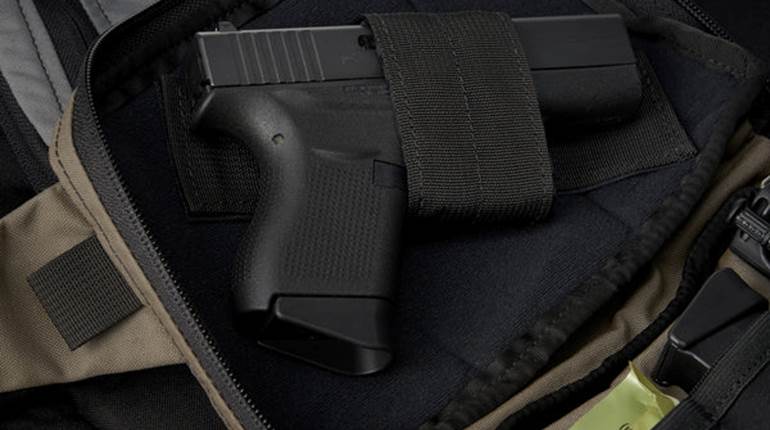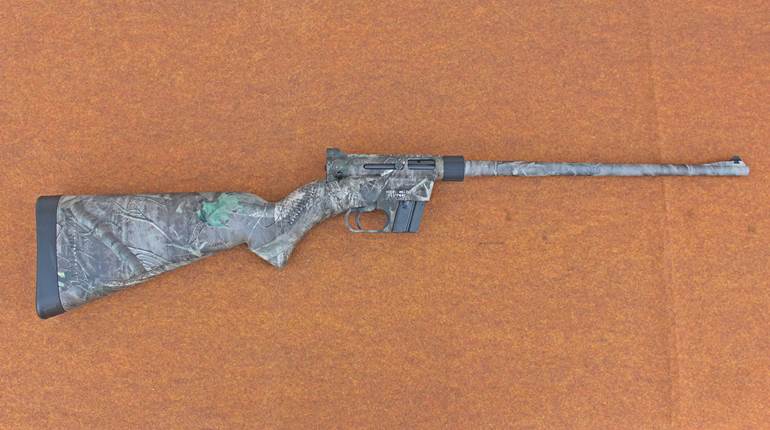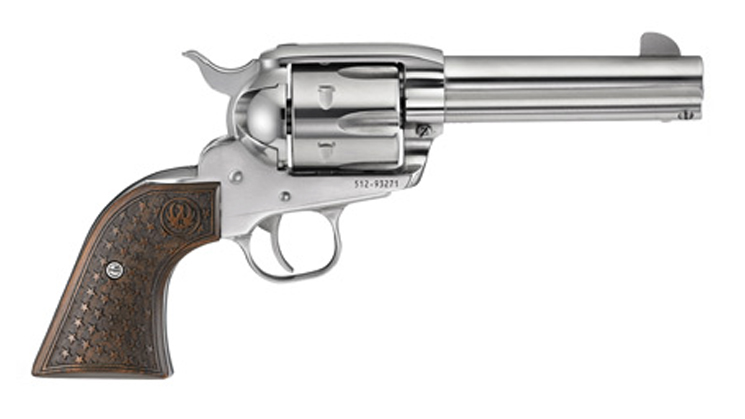
Top: Ruger Vaquero Stainless in .45 Colt available from TALO Distributors
From its very inception as a percussion firearm, the single-action revolver was designed as a fighting gun. It was a critical part of the winning of our Western frontier and favored by citizens, lawmen and soldiers alike, in saving their hides during those troubled times. With the introduction of cartridge revolvers, especially the Smith & Wesson American and the Colt Single Action Army, the single-action became known for its power, ruggedness and dependability.
Taking a broad view of the question, the single-action revolver is and always has been a defense gun. While that is definitely true, the simple fact is that there are better defense guns available for today's armed citizen. Today's handguns often hold more cartridges, are easier to reload, and can often be fired faster than the single-action revolver. It was a good choice during its day, but there are simply better choices for the modern shooter. But there are always exceptions to every rule.
Consider, if you will, the serious cowboy-action shooter. Many of these folks shoot hundreds of rounds per week getting ready for matches and staying tuned up. I wonder how many of them practice anywhere near that much with another type of defensive handgun once they have unbuckled their brace of Colt or Ruger sixguns and laid them aside. It's a simple fact that the gun you shoot the most is also the gun that you shoot best. I wouldn't fault one of these cowboy shooters who chooses to carry his SA sixgun for personal protection.
Many of us also prefer to use single-action revolvers when handgun hunting or when just bumming around in the woods. Single actions are chambered for the most powerful handgun cartridges. And many of us notice less felt recoil when firing these powerful guns because they tend to roll in the hand under recoil. However, bad things can happen in the out-of-doors, too. And, in the woods, a fellow might have to deal with bad people, but he also might have to deal with an animal attack. A fellow had better learn to fight with whatever he has on his hip when things get bad. There are a few things that a person needs to consider if he has to defend himself with a single-action revolver.

Image courtesy Colt.com
It is an excellent idea to establish a single-action grip that places the little finger of the shooting hand under the pistol grip. This helps in managing the revolver's recoil. But it also helps the shooter pull the gun back down out of recoil for the next aimed shot. In this mode, we exert the same strong shooting grip with the little finger that we do with the rest of the fingers in the shooting hand.
Another technique that supports fast, accurate shooting is to always cock the revolver with the thumb of the support hand. This allows the shooting hand to always maintain a shooting grip on the gun. I have seen some practiced single-action shooters deliver aimed fire as fast as they can with a DA revolver or auto. It takes a bit of practice but it certainly allows for quick, accurate shooting.
Clearly, the biggest drawback of the single action as a defensive handgun is that they are slow to reload when compared to more modern guns. For this reason, the SA shooter is well advised to reload every time he has a chance in a defensive situation. That is, one tops off the gun whenever there is a lull in the fight. Don't wait until the gun runs empty, instead replace the fired cartridges whenever there is time to do so.
Texas Ranger captain Frank Hamer is but one example of a knowledgeable gunfighter who used the single-action revolver well into the 20th century. On a number of occasions, such as his fight with Gee McMeans, Hamer matched his .45 Colt against autoloading weapons. Here was a man who knew his gun, knew how to run it, and knew how to shoot it accurately.
The new shooter would be well advised to look elsewhere for a designated personal defense gun. Double-action revolvers and semi-automatics just make more sense when looking for a handgun that a person may have to bet his life on. However, those who use and enjoy shooting the single-action should take the time to learn how to fight with it effectively. It might just be the closest thing you can get your hands on when things get bad and nasty. In the end, it is the coolness of the operator that often tells the tale, not whatever defensive tool he might have in his hands at the time.












